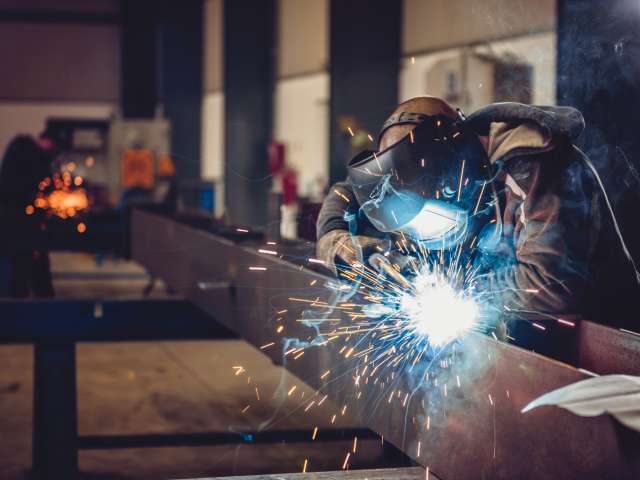
 business
business 
Choosing the right welding method is critical for metal fabricators and manufacturers who outsource their welding process. The complexity and variety of welding techniques available can make this decision challenging, yet it is essential for ensuring the quality, efficiency, and cost-effectiveness of your projects.
Below, we’ll help you decide what welding method is best for your fabrication process by explaining the major welding techniques and factors to consider before selection.
MIG welding, or metal inert gas welding, is one of the most popular welding methods. It uses a continuous wire feed to create a weld. This method provides speed and ease of use.
MIG welding is ideal for welding thicker materials and is common in the automotive and construction industries. The process involves a welding gun that feeds wire and gas simultaneously, creating a clean and strong weld.
TIG welding, or tungsten inert gas welding, offers high precision and control. Unlike MIG welding, TIG welding uses a non-expendable tungsten electrode to produce the weld. TIG welding offers numerous benefits and has many applications, particularly with the welding of thin materials for the aerospace industry.
TIG welding provides a clean and aesthetically pleasing weld, making it ideal for projects where appearance matters. However, it requires more skill and time compared to other welding methods, which can impact production speed.
Stick welding is also known as shielded metal arc welding and is a versatile and cost-effective method. It uses a consumable, flux-coated electrode to lay the weld. Stick welding is suitable for a variety of materials and thicknesses, making it a popular choice in construction and repair work.
It’s also highly effective in outdoor and windy conditions, as it doesn’t require a separate shielding gas. However, stick welding can produce more slag and spatter compared to other methods, requiring additional cleanup.
Flux-cored welding is like MIG welding but uses a special tubular wire filled with flux. This method offers the benefits of both MIG and stick welding, providing good weld quality and high deposition rates.
Flux-cored welding is most suitable for thicker materials. Shipbuilders and heavy-equipment manufacturers frequently employ flux-cored welding. The downside is it produces more smoke and fumes, requiring proper ventilation and safety measures.
When deciding what method of welding is best for your fabrication process, you must consider several key factors to ensure optimal results. These factors include the type and thickness of the material being welded, as different welding methods are better suited for specific materials and thicknesses.
The desired weld quality and appearance should influence the choice, especially for projects where aesthetics are important. Additionally, fabricators should consider the available equipment and the skill level of the welders, as some techniques require more advanced skills and precise control. Lastly, you should evaluate the production speed and the cost-effectiveness of the method to align with project timelines and budgets.
We hope our guide has given you a clearer understanding of the various welding methods and how to choose the right one for your process. Appraise your materials and needs and consider what each welding method offers to find the ideal match.
24World Media does not take any responsibility of the information you see on this page. The content this page contains is from independent third-party content provider. If you have any concerns regarding the content, please free to write us here: contact@24worldmedia.com